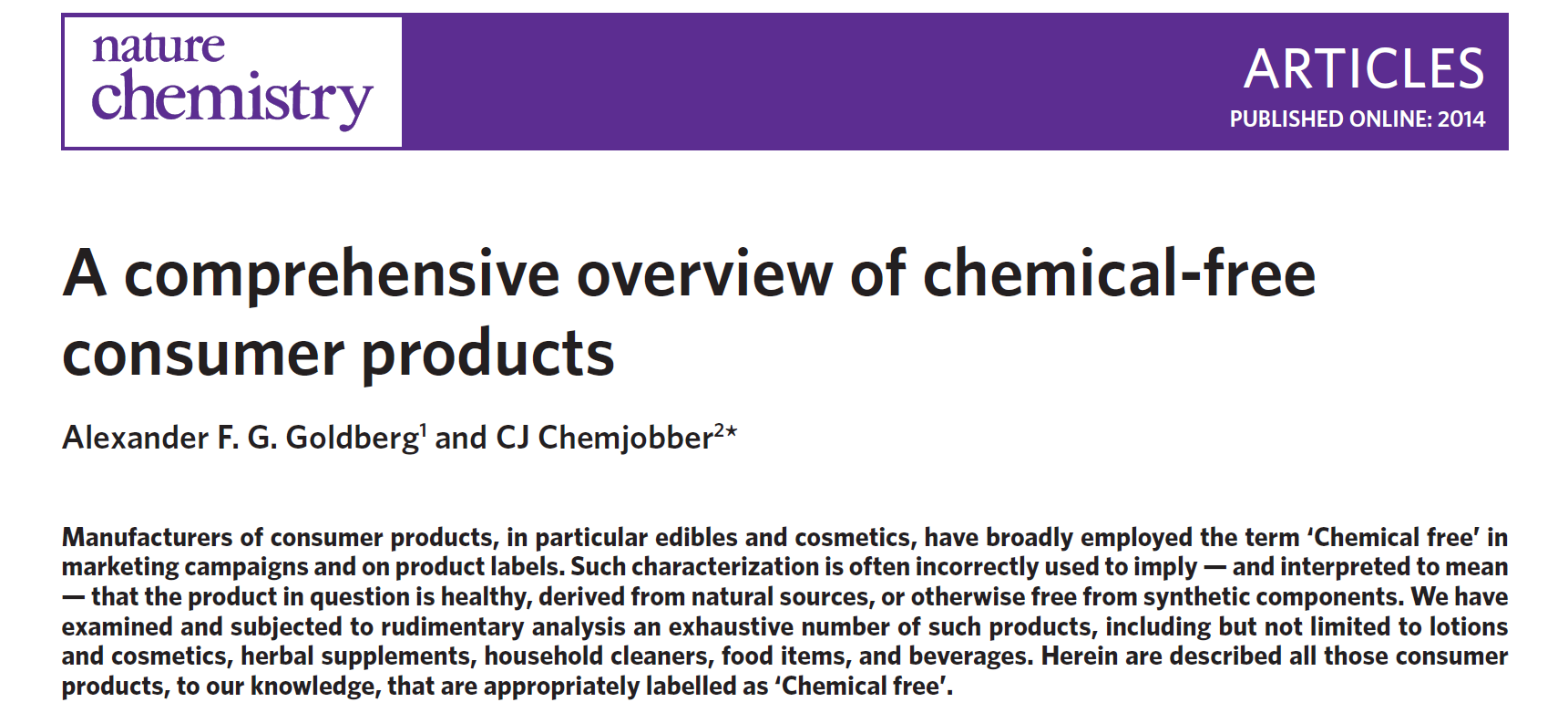Back in April of this year, a manuscript popped up in our submission system from two chemists we know well from Twitter/the chemistry blogosphere — Chemjobber and Alex Goldberg. The paper, entitled A comprehensive overview of chemical-free consumer products is perhaps best summarised by quoting (with permission from the authors) from the cover letter that came with it:
“We have completed an exhaustive study of common products that are marketed as ‘chemical-free’ and have prepared a detailed analysis of those products that are appropriately labeled as such. In brief, there aren’t many. In briefer, see the body text of our manuscript. We believe that the popular use of the term ‘chemical-free’ is of great interest (and of even greater malaise) among chemists of all backgrounds, that our findings are generally applicable and our analysis robust enough. In addition, though this topic is frequently discussed in many circles in the chemistry community, no peer-reviewed study to our knowledge has been reported on this topic at this length. For these reasons, we consider Nature Chemistry to be the appropriate journal for publication of our manuscript. We hope that this article serves as a practical resource for chemical education and science advocacy and that the examples described therein provide useful guidance for appropriate marketing and labeling practices.”
Chemjobber and Alex go on to suggest who would (and would not) be appropriate reviewers:
“As potential referees from a cross-section of the field of chemistry, we propose Dr Carmen Drahl (Chemical & Engineering News), Dr Derek Lowe (Vertex Pharmaceuticals), Prof. Paul Bracher (St. Louis University), and the Chemical-Free Bear (On Twitter somewhere), all of whom are experts in the field of chemical-free chemistry. We request that you exclude as possible referees the editors of the Chemical Free Kids Facebook page, and all of the 3000+ individuals who have ‘Liked’ it.”
Because we still have print copies of the journal, we figured that we couldn’t publish this paper in the journal itself as that would have meant using chemicals… and that just didn’t seem right for a chemical-free paper — so alas, it didn’t make the cut. That said, however, we don’t get submissions like this every day… ones that first make us laugh and then make us think, so we thought long and hard about what we could do. With many thanks to our production team for assembling the PDF file, we’ve decided to post the manuscript here on our blog, in what is essentially Nature Chemistry format (just click on the image below to download the full pdf). If you feel like reviewing the manuscript, please leave your chemical-free comments on this blog post.


Please sign in or register for FREE
If you are a registered user on Research Communities by Springer Nature, please sign in